- What is Abstract Expressionism Art, American painters of New York City
- Abstract Expressionism Artists - the art of the 1940s and 1950s
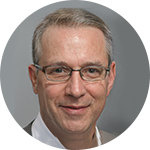
- 6 February '19
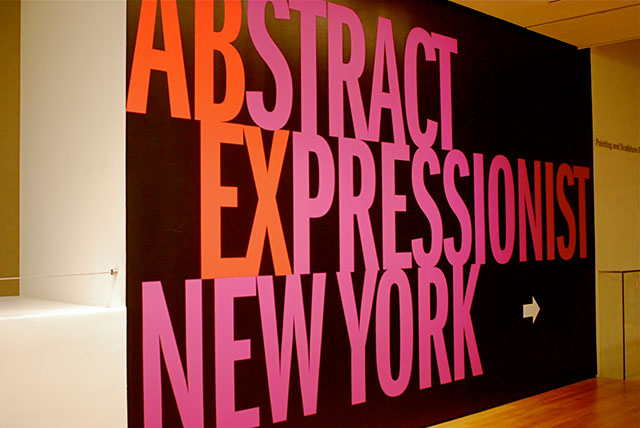

by Robert McIntosh
6 February '19What is Abstract Expressionism Art, American painters of New York City
Abstract Expressionism art
Abstract Expressionism art, as part of abstract art, is a term applied to a movement in American painting that flourished in New York City after World War II, sometimes referred to as the New York School or, more narrowly, as action painting. The America of the 1940s, where Abstract Expressionism emerged, was reeling from the collapse of world order triggered by World War II. This was a significant influence on the nation's artists - most of whom remembered The Great Depression and its relief plans such as the Works Progress Administration that had given them the chance to come up with a painting profession, and they started searching for means of reacting to the cloudy climate. The difficulty was that both major art movements of the 1930s - specifically, Regionalism and Social Realism - neglected to meet their desire to get a break with present thinking. In this, they have been strongly affected by the coming of many modern artist refugees out of Europe, whose revolutionary approach to artwork opened up a string of new chances.
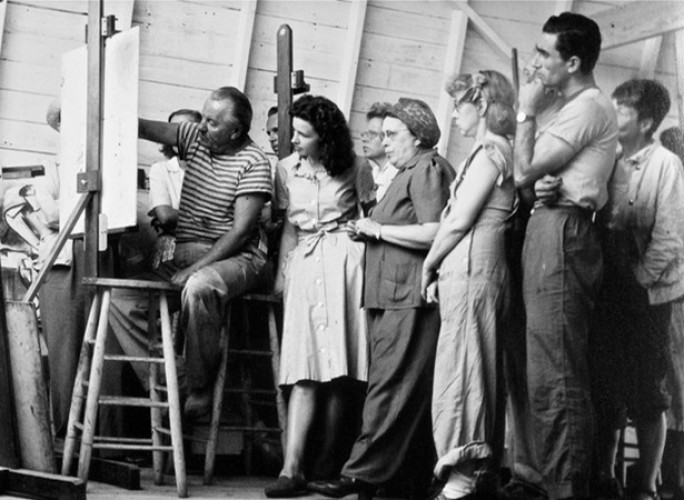
These exiles included characters such as the Armenian-born Arshile Gorky, that settled in the US in 1920, along with the German-born Hans Hofmann who migrated to America in 1930, in addition to the German Expressionist George Grosz (1893-1959), the Cubist Fernand Leger (1881-1955), the Bauhaus subjective painter Josef Albers (1888-1976) along with the geometrical abstractionist Piet Mondrian (1872-1944). Other powerful immigrants were the Dadaist Marcel Duchamp (1887-1968), along with the Surrealists Yves Tanguy (1900-55), Andre Masson(1896-1987), Max Ernst (1891-1976) along with Andre Breton (1896-1966). The Surrealist artists proved especially powerful, with their notion of unconscious automatic painting that was taken up by Jackson Pollock and others. The importance of the artists to the new American trend was recognized as early as 1944 by Jackson Pollock himself: "The simple fact that great European Moderns are currently here's extremely crucial for they bring with them an understanding of the issues of contemporary painting."
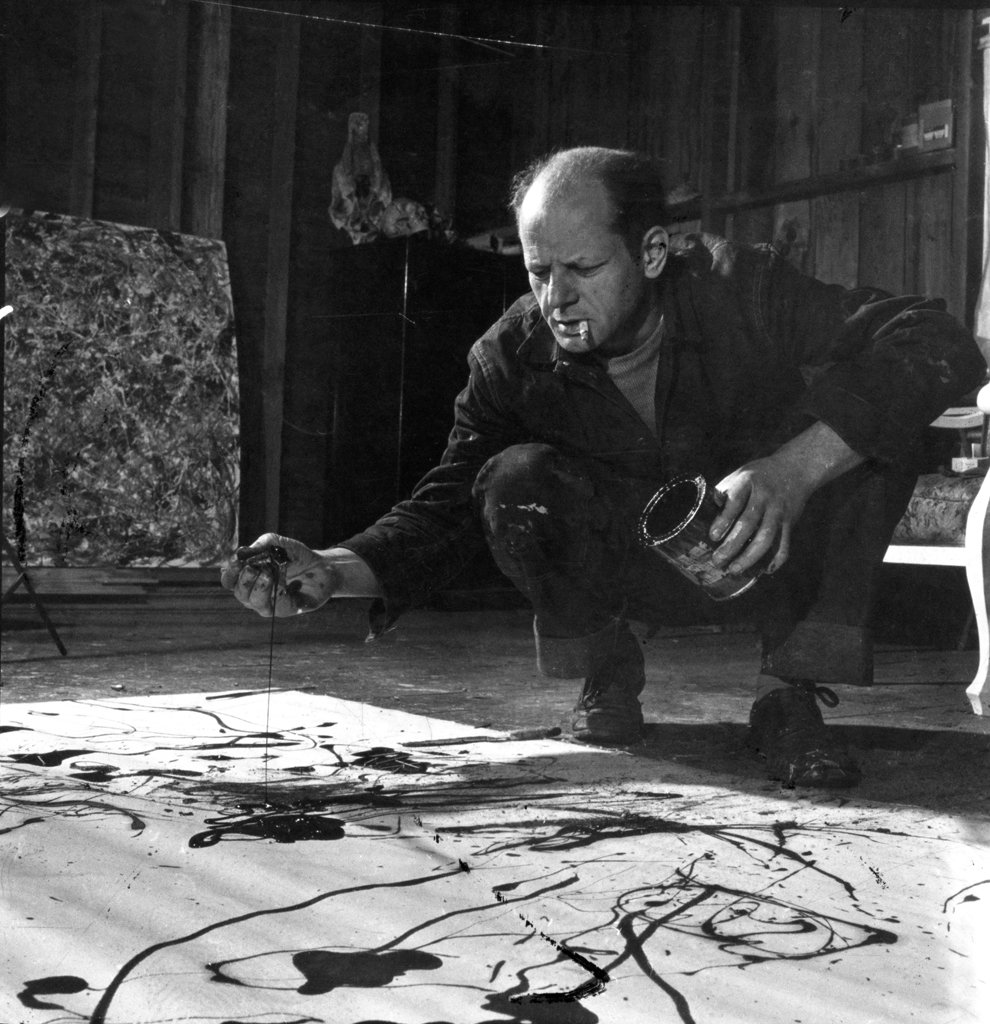
The exchange of thoughts was helped in New York with an increasing infrastructure of places and exhibitions promoting contemporary artwork, including The Museum of Modern Art (based 1929) which hosted displays of Cubism, several different styles of abstract art, Dada, Excellent Art and Surrealism, together with retrospectives of all Leger, Henri Matisse, and Pablo Picasso, amongst others. Works by Gabo, Mondrian, El Lissitzky, and other irresistible artists were shown at Albert Gallatin's Museum of Living Art. Another place was that the Museum of Non-Objective Painting (based 1939), the forerunner of the Solomon R. Guggenheim Museum, that was noted for the collection of paintings by Wassily Kandinsky (1866-1944). The topics and ideas of European modernism were also disseminated via instruction. The German performer immigrant Hans Hofmann turned into a massive influence on painters, painters and the growth of American contemporary art through his New York art college where he taught from 1933 until 1958. Lastly, an individual should not dismiss the part of artwork critics in addition to wealthy collectors and patrons - especially Peggy Guggenheim (1898-1979), also Leo Castelli (1907-99) - that have been busy agents for the new motion. See also: Art Museums in America.
Abstract Expressionism definition
An artistic movement of the mid-20th century comprising diverse styles and techniques and emphasizing especially an artist's liberty to convey attitudes and emotions through nontraditional and usually nonrepresentational means.
The varied work produced by the Abstract Expressionists resists definition as a cohesive style;
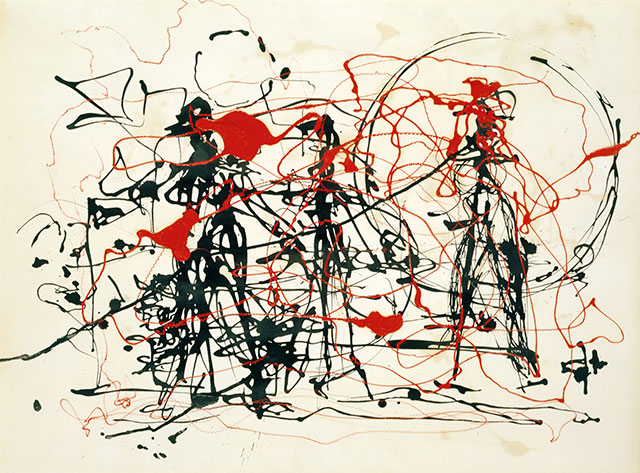
American art in the 1950s
Abstract Expressionism emerged in a climate of Cold War politics and social and cultural conservatism. World War II had positioned the United States as a global power, and in the years following the conflict, many Americans enjoyed the benefits of unprecedented economic growth. But by the mid-1950s the spirit of optimism had morphed into a potent mix of power and paranoia fueled by the fear of Communist infiltration. One scholar later reflected: “It is ironic but not contradictory that in a society…in which political repression weighed as heavily as it did in the United States, abstract expressionism was for many the expression of freedom: the freedom to creative controversial works of art, the freedom symbolized by action painting, by the unbridled expressionism of artists completely without fetters.”
Abstract Expressionist Artists in New York City
Abstract Expressionism marked the beginning of New York City’s influence as the center of the Western art world. The world of the Abstract Expressionist American artists was firmly rooted in Lower Manhattan, were color field painting style of abstract painting emerged during the 1940s and 1950s.
Jackson Pollock’s studio was on East 8th Street, Willem de Kooning’s and Philip Guston’s were on East 10th, and Franz Kline at the Cedar Street Tavern on University Place. Barnett Newman at 47 Horatio Street in the West Village. Lee Krasner at the Springs, East Hampton and Hans Hofmann studio at 53 East 9th Street. In 1940, American painter Robert Motherwell came to New York City and joined the group.
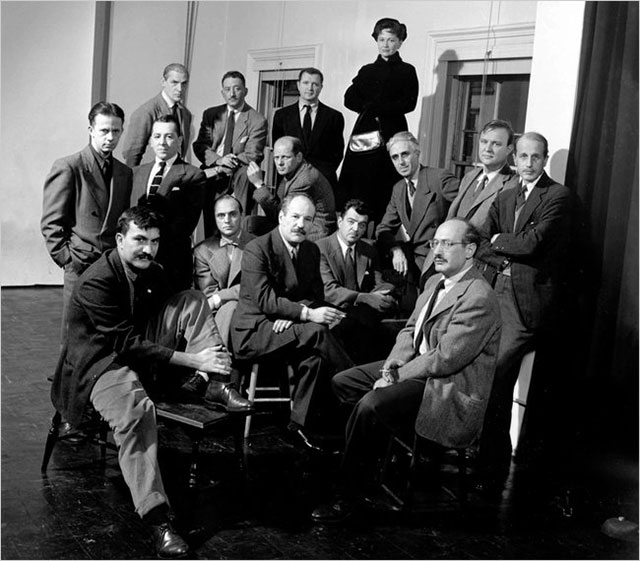
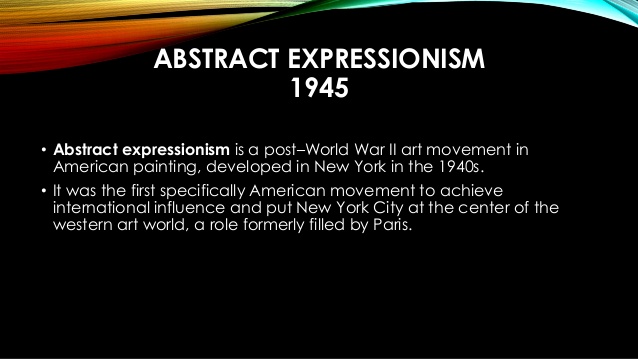
Abstract Expressionism Movement
Abstract Expressionism wasn't ideal as a label for the movement, which developed in the 1940s and 1950s in New York. It was somehow meant to encompass not only the work of painters who filled their canvases with fields of color and abstract forms but also those who attacked their canvases with vigorous gestural expressionism. However, Expressionism becomes the most accepted name for a group of artists who held much in common. Most of them were born out of profound emotion and universal themes and were committed to art as expressions of the self, and most were shaped by the Surrealism, a movement that they translated into a new trend in modernism. In their success, these New York painters robbed Paris of its mantle as leader of modern art, and set the stage for America's dominance of the international art world.
Abstract expressionist paintings
Regardless of this diversity of the Abstract Expressionist movement, three general strategies can be distinguished. Pollock first practiced action painting by massaging commercial paints raw canvas to develop complicated and tangled skeins of paint to exciting and suggestive linear patterns. De Kooning used incredibly expressive and vigorous brushstrokes to create richly colored and textured pictures. Kline employed strong, sweeping black claws on a white canvas to make starkly massive forms.
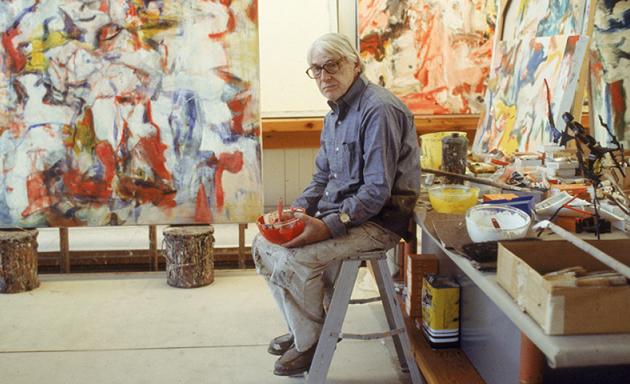
The middle ground in Expressionism Expressionism is represented by various diverse styles, which range from the lyrical, delicate vision and fluid shapes in paintings by Guston and Frankenthaler into the clearly ordered, solid, almost calligraphic images of Motherwell and Gottlieb.
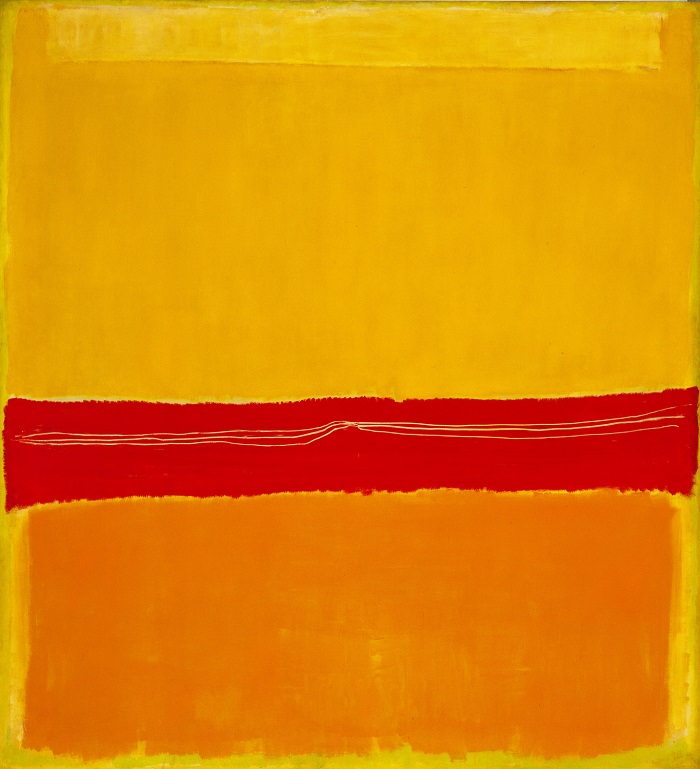
The third and emotionally expressive strategy was the Rothko, Newman, and Reinhardt. These painters used big areas, or areas, of flat color and thin, diaphanous paint to attain silent, subtle, nearly possible consequences. The exceptional color-field painter was Rothko, many of whose functions include large scale mixtures of soft-edged, solidly colored rectangular areas that ordinarily shimmer and resonate.



